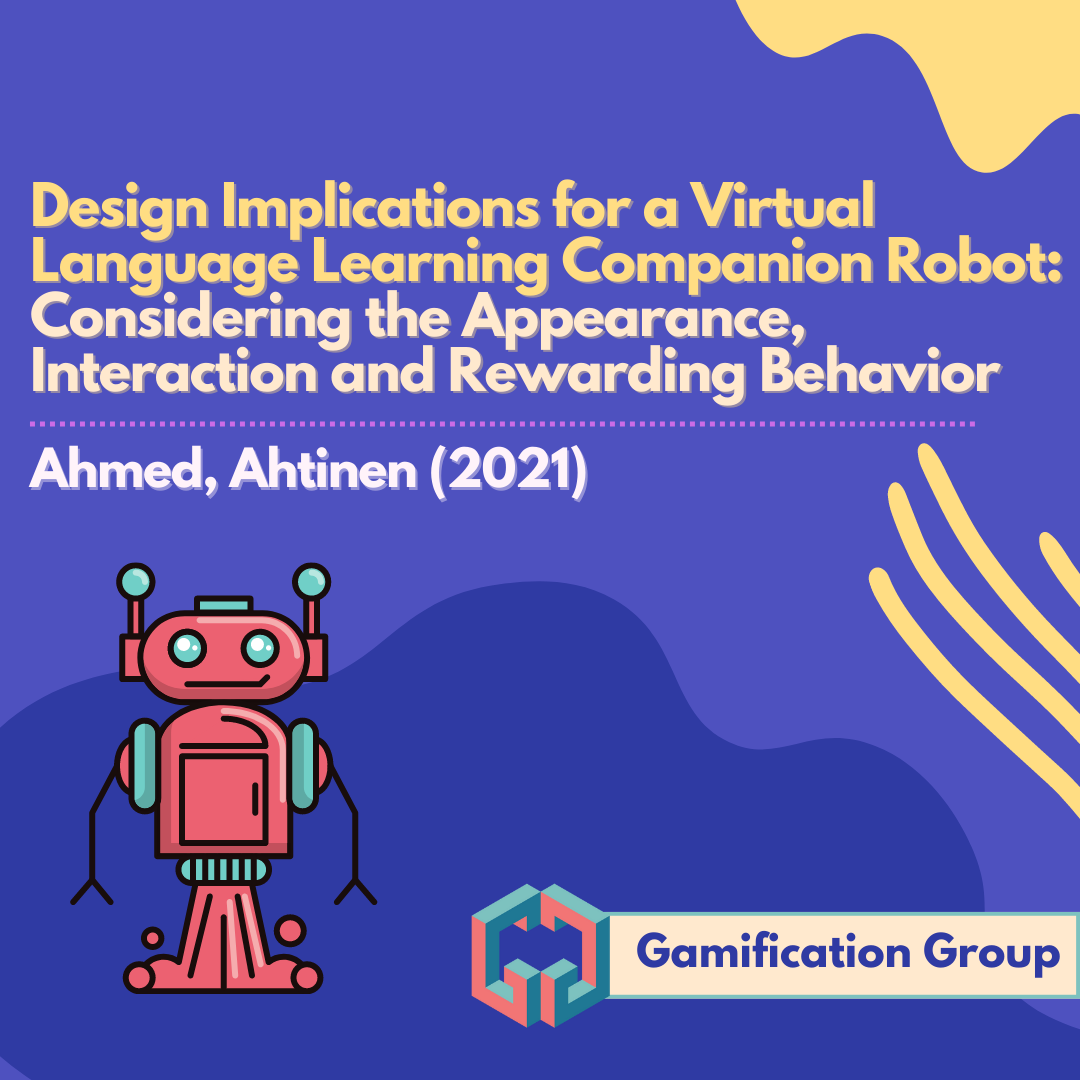
Design Implications for a Virtual Language Learning Companion Robot: Considering the Appearance, Interaction and Rewarding Behavior
Second language learning has become almost a necessity for many parts of the world due to the effects of globalization, as such many online language learning platforms have gained popular attention (especially with the effects of the COVID pandemic). An important area that requires research is how to make these online learning platforms more effective. One such approach in language learning is Robot-Assisted Language Learning (RALL), where social robots are employed to assist in language learning, adding meaningful and human-like interactions to the process. This study aims to investigate potential users’ perception and expectations of a virtual robot as a learning companion and it is guided by three main research questions: (RQ1) “What type of physical appearance should a virtual language learning companion robot have?”, (RQ2) “How should a virtual language learning robot react and be- have to create meaningful and engaging interaction? What type of movements and gestures should be included?”, (RQ3) “What type of rewards can motivate the users for learning in an online language learning platform?”.
To address these research questions 2 online co-design workshops were conducted with university students. First, with university-level language students who had little to no experience interacting with robots; second, with university-level design students who had previous experience in human-centered design of social robots. After these workshops were conducted, data from them were analyzed qualitatively to find out specific design implications for a virtual language learning companion robot.
The analysis has shown that the participants believed both embodiment, gestures, behaviors, and rewards were highly important. The implications analyzed out of the data are as follows: (1) The appearance of the virtual robot should not fully resemble a human. (2) Human-like movements and gestures are preferable. (3) Facial features should be handled very carefully. (4) Positive feedback with constructive criticism is effective. (5) Voice-based interaction in line with movements and gestures has a positive effect. (6) The robot should have some reaction to every action of the user. (7) The robot can turn into funny attractive characters as a reward.
The study concludes by noting that these design implications lack evaluation, and the researchers are already planning to develop a virtual language learning companion robot to evaluate these implications.
Eshtiak Ahmed and Aino Ahtinen. 2021. Design Implications for a Virtual Language Learning Companion Robot: Considering the Appearance, Interaction and Rewarding Behavior. In Proceedings of the 9th International Conference on Human-Agent Interaction (HAI ’21). Association for Computing Machinery, New York, NY, USA, 56–65.
DOI: https://doi.org/10.1145/3472307.3484163
Abstract
Second language learning has become very important because of globalization and as a result, many online language learning platforms have gained popularity. Despite their popularity and convenience, they still lack the human factor and meaningful interaction. Robot-assisted language learning (RALL) is a concept where social robots are employed to assist in language learning, adding meaningful and human-like interactions to the process. In the case of online learning platforms, a similar approach can be taken using virtual robots. Virtual robots are similar to social robots as they can have a visual appearance, communication capabilities as well as human-like features. This research aims to understand the potential users’, i.e., university students’ perceptions, and expectations of a virtual robot as a language learning companion. We are focusing on three major aspects of its design: appearance, interaction and rewarding behavior. This is a qualitative and explorative study, which employs a human-centered design (HCD) approach by conducting a co-design workshop with five groups of university-level language students (n = 25) and a theme interview with seven design students. This article presents the first phase of the HCD process. The participants were asked questions about the appearance, behavior, movements, motivational factors, sound, and rewarding features of the potential virtual language companion robot. The findings show that the idea of having an interactive virtual robot to assist online language learning was accepted and appreciated by all the participants but their expectations about the robot’s design varied. The potential users preferred a robot-like appearance rather than a human-like one for the virtual language learning companion, however, different robot-like appearances were mentioned in terms of their body parts, hands, head, shapes, etc. Human-like gestures and movements were appreciated by the participants. Finally, seven design implications were formulated to support the further design of a virtual robot that can act as a virtual language learning companion as part of an online learning platform for university students.




Sorry, the comment form is closed at this time.